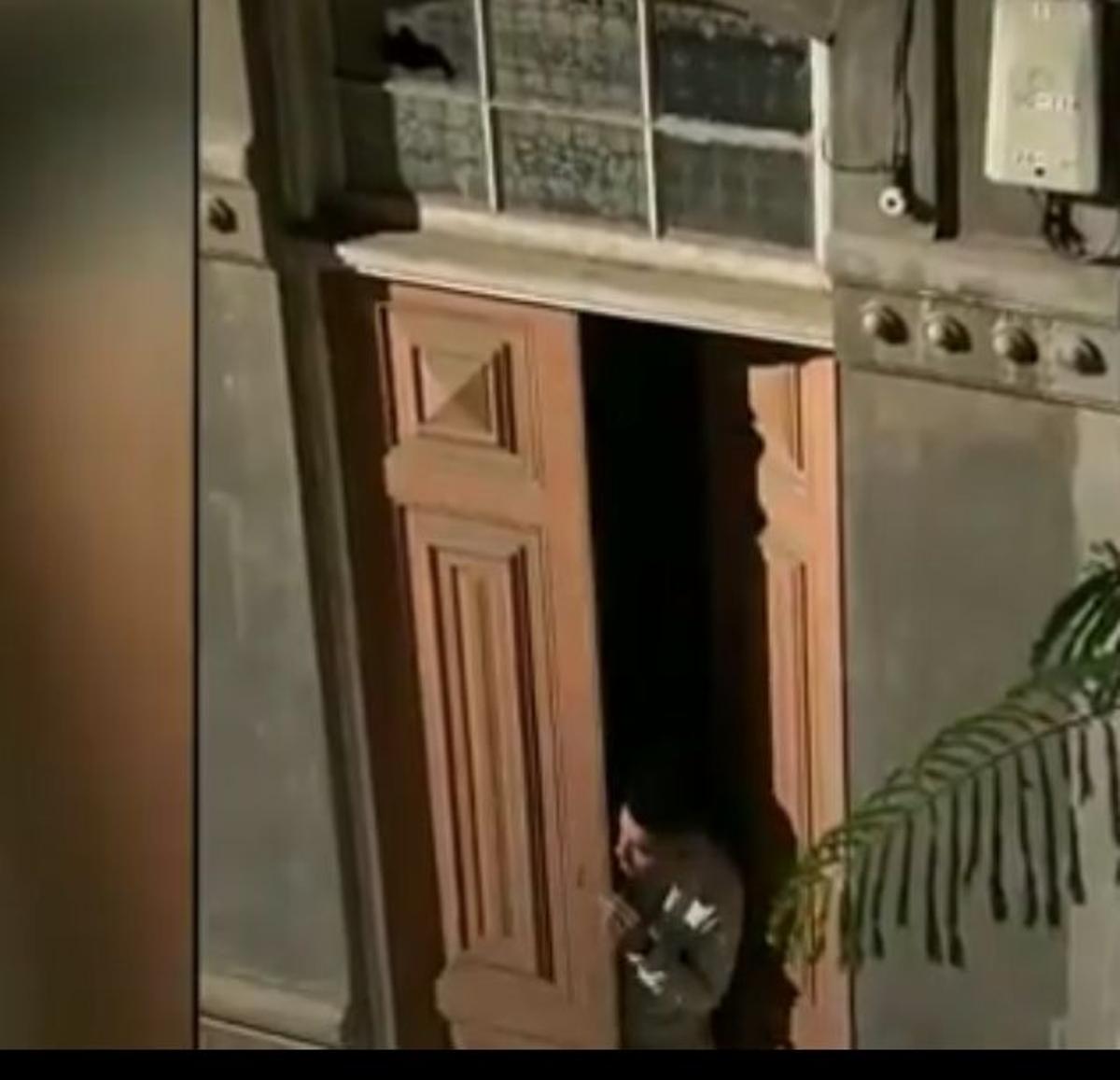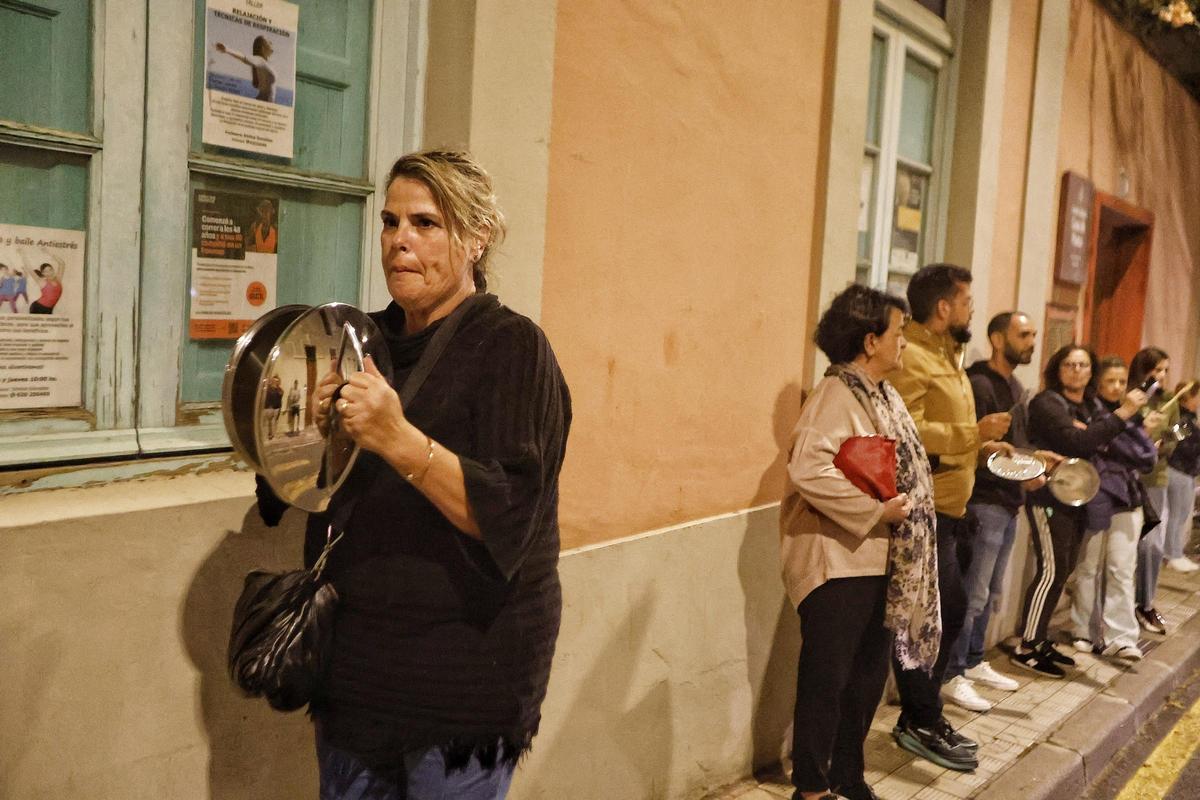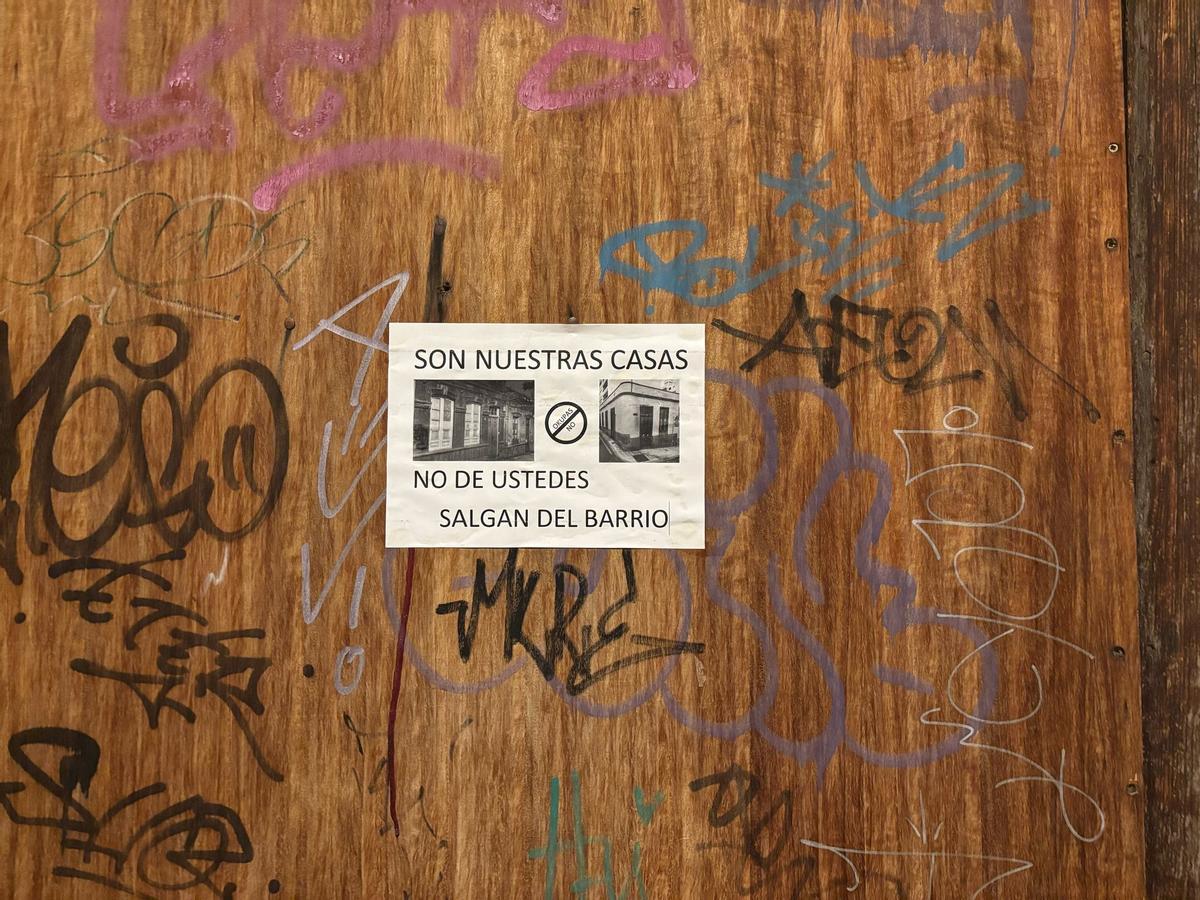The Okupas who unlawfully occupied a property in the El Toscal area of central Santa Cruz de Tenerife, have 48 hours to vacate it to avoid a forced eviction. This is the ruling made by the judge of the Court of Instruction number 5 in Santa Cruz de Tenerife, as revealed in an order accessed by the media.
The property in question is located at number 10 of Second Ravina passage, which was taken over last Tuesday, February 11 at night by a group of young individuals who had earlier occupied another nearby residence on El Greeting street.
The judge cautions the squatters that if they do not vacate the premises within the stipulated 48 hours, they would commit an offence of precautionary measure, resulting in eviction “with the assistance of law enforcement.”
This legal action follows a complaint filed by the owners of the Terrera House with the National Police just a day after the illegal occupation took place. In this complaint, the family from Tenerife, represented by lawyer Jaime García de la Cruz, provided documentation proving their ownership of the property and that it had neither been rented out nor leased to anyone.

Moment when a group of young people occupied the house on the second passage of Ravina on February 11. / Ed
The magistrate from Court of Instruction number 5 of Santa Cruz de Tenerife initiated proceedings and summoned three of the squatters for questioning regarding housing usurpation and another alleged crime against historical heritage. The individuals called in for questioning comprise two young men from the Maghreb and one from Central Europe.
In the order, the judge indicates that the three individuals representing the group that has occupied two residences in Toscal failed to provide any documentation pertaining to number 10 of Second Ravina passage that could legitimise their occupation, specifically, no lease or temporary permission from the owners. The three individuals, accompanied by a lawyer at the Palace of Justice, exercised their right to remain silent.
In addition to the housing usurpation charge, the judge has added a crime against historical heritage for the three individuals. It is important to note that this property in Second Ravina, which occupies a site of approximately 90 square meters, is protected as part of the cultural heritage (BIC) of the historic El Toscal neighbourhood. The owner inherited it and last year commenced a rehabilitation process, which necessitated adhering to strict conservation standards due to its significant cultural value.
The magistrate reminds in the order, which instructs the squatters to vacate the house, that the property is designated as BIC and raises concerns that the individuals are conducting work inside, constituting a crime against historical heritage, as outlined in Article 323 of the Criminal Code. The judge notes that the house is not in a condition fit for habitation, posing risks to those involved.

One of the protests organised by the residents of El Toscal against the takeover of their homes. / María Pisaca
The occupation of this house, along with another terrera on the nearby El Greeting street, has incited outrage within the El Toscal community. Residents have engaged in protests in response to the perceived inaction of the authorities to demand the eviction of the jeunes, who have not only unlawfully occupied properties but have also instilled a sense of insecurity within the area.
This group, reportedly acting in a coordinated manner, has been involved in several incidents, displaying aggressive and confrontational behaviour. During one such altercation witnessed by the public, two of the squatters confronted local residents, with one even threatening them with a knife.
The local administration of Santa Cruz, which lacks the authority to intervene in these situations, has expressed support for these claims. Mayor José Manuel Bermúdez urgently appealed to the Central Government Delegation in the Canary Islands shortly after the occupation of the Second Ravina passage residence, highlighting the need for action regarding both the unlawful occupation and the maintenance of public safety.
In a recent session of the Chicharrero City Council, Bermúdez expressed concern about the dire circumstances in the Central El Toscal area relating to illegal housing occupations. The Chicharrero council member stated that, under laws “from socialist and Podemos,” a vulnerable family housing three minors had become victims of what he termed “Quinquis Okupas.”

One of the posters displayed by residents of El Toscal protesting against housing occupations. / Ed
In his remarks, Bermúdez highlighted the prevailing climate of insecurity that has emerged in the community, noting that one of the squatters is currently under an expulsion order from Spain that remains unexecuted, and expressing confusion as to why there has been such a delay in taking action.
Eighteen days after the Okupas forcibly entered the Second Ravina passage house, the judge has now mandated an immediate return to the rightful owners. As of Saturday, the squatters remained inside the property and showed no indication of preparing for departure, having 48 hours to do so.
This passage, where the Terrera Housing is located—called Second Ravina—along with another quite similar nearby passage, First Ravina, was established in the late 19th century by organisations associated with the port activities of Santa Cruz, and even today, despite some of the properties’ deterioration, it remains one of the significant attractions of El Toscal and a true historical gem. It is a neighbourhood currently undergoing transformations by the City Council, with an ambitious plan to pedestrianise certain streets and foster social and economic development.
















